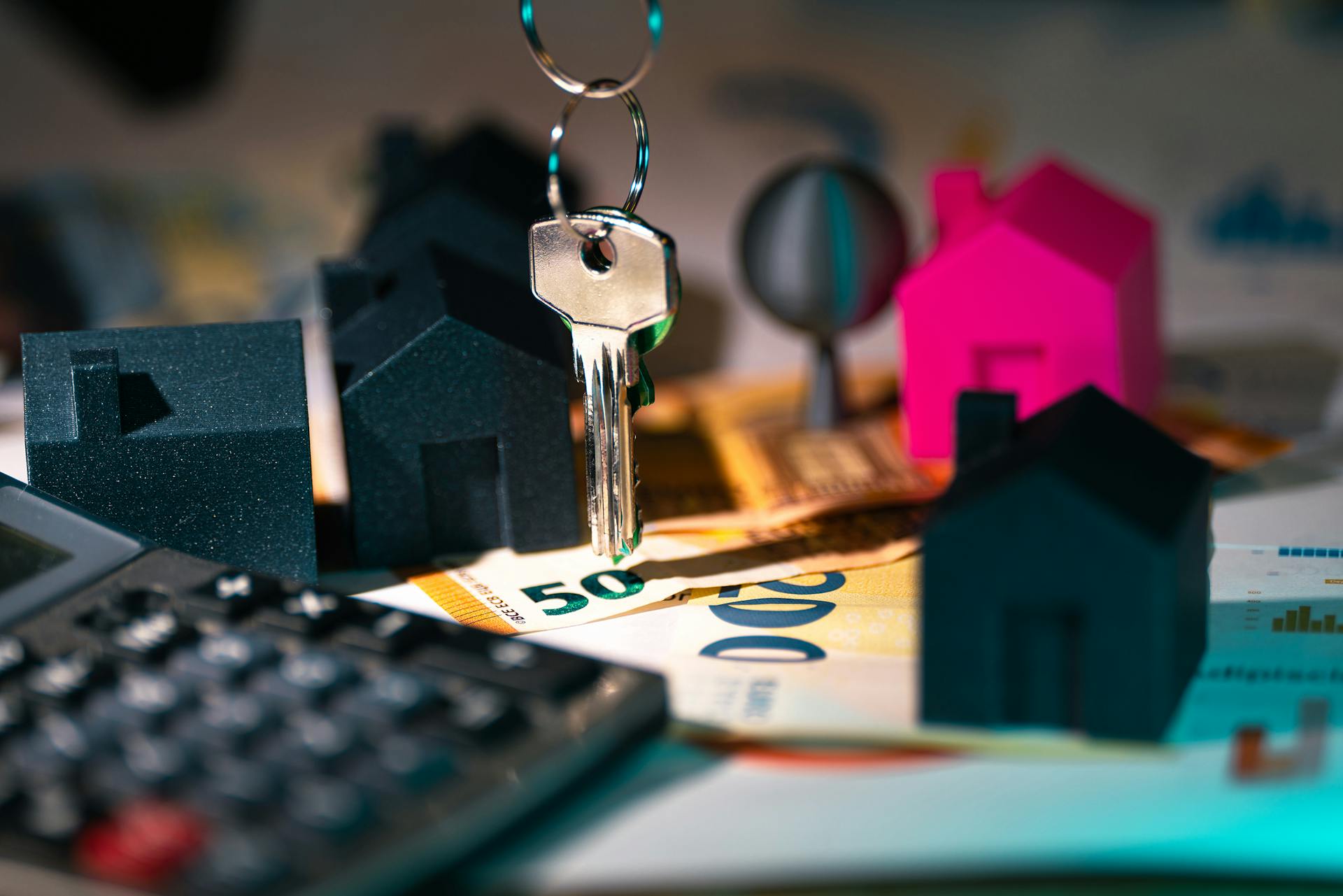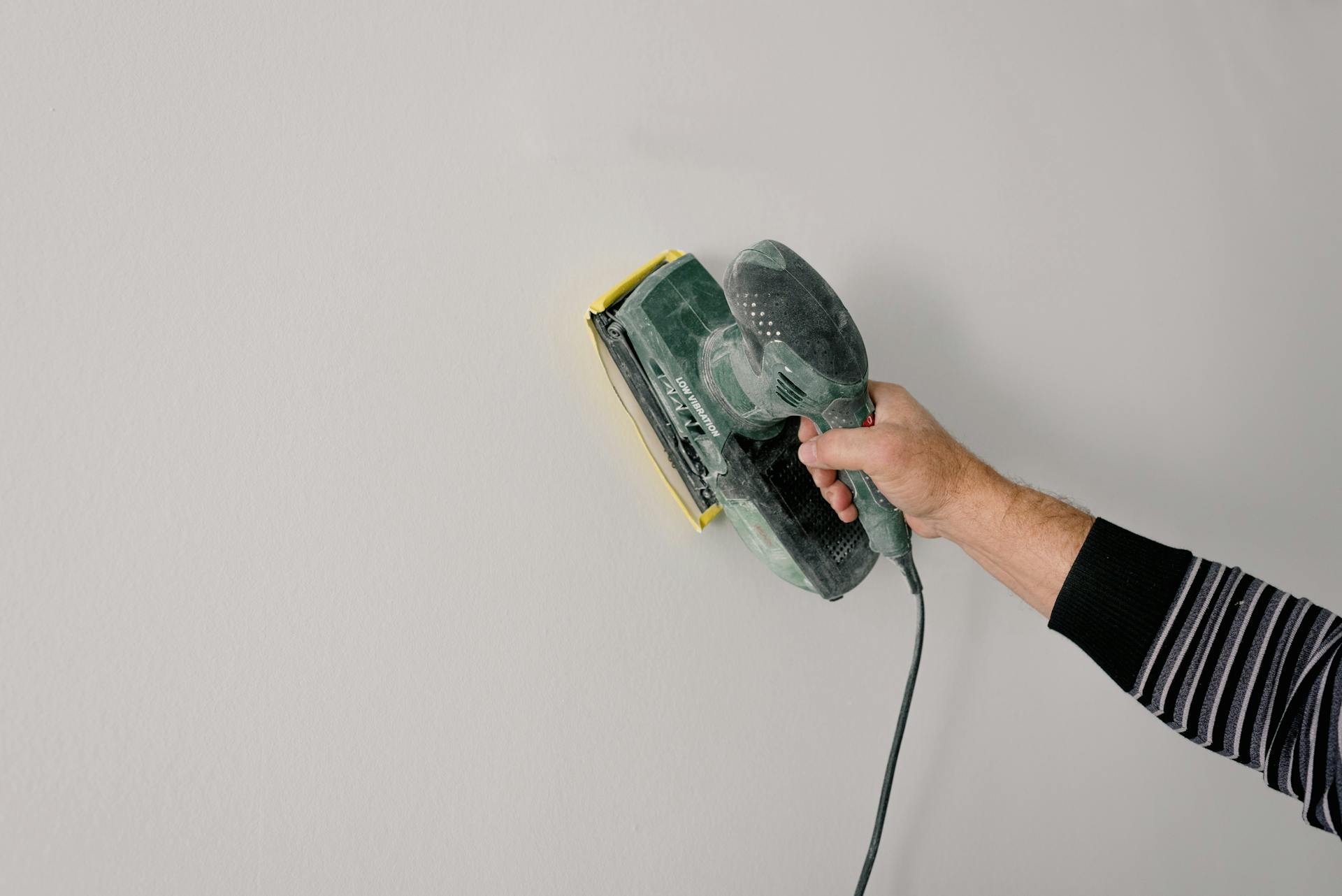
Heloc rates over prime are determined by a combination of factors, including the lender's risk assessment and the market conditions.
The spread between the prime rate and the HELOC rate can vary depending on the lender and the borrower's creditworthiness.
In general, HELOC rates over prime can range from 2% to 5% or more.
This means that if the prime rate is 6%, a HELOC with a 2% spread would have an interest rate of 8%, while one with a 5% spread would have an interest rate of 11%.
Expand your knowledge: Libor Rate vs Prime Rate
Understanding HELOC Terms
So, you're trying to understand HELOC terms, but it's like trying to read a foreign language. The good news is that once you grasp the basics, you'll be able to navigate the process with ease.
A HELOC (Home Equity Line of Credit) is a type of loan that allows you to borrow money using the equity in your home as collateral. The interest rate on a HELOC is usually variable, which means it can change over time.
A variable interest rate can be a double-edged sword - it can save you money when rates are low, but cost you more when rates rise. For example, if your initial interest rate is 3.5% and it increases to 5%, you'll be paying more interest on your loan.
HELOCs often come with a draw period, which is the time during which you can borrow money from the line of credit. This period can last anywhere from 5 to 20 years.
Consider reading: What Happens to Mortgage Rates When Fed Cuts Rates
Factors Affecting HELOC Rates
The Federal Reserve's fed funds rate plays a significant role in determining HELOC rates, as it affects the prime rate, which in turn influences HELOC rates.
The prime rate is usually 3 percentage points higher than the fed funds rate, and many lenders tie the rates on HELOCs and home equity loans to the prime rate, often adding extra percentage points onto them.
Several factors can impact HELOC rates, including the loan-to-value ratio, with higher ratios resulting in higher interest rates. The amount borrowed and the home's value also come into play, as lenders see HELOCs with loan-to-value ratios over 80% as a bigger risk.
Explore further: Mortgage Rates vs Fed Funds Rate Chart
Here are some key factors affecting HELOC rates:
Economic Conditions
Economic conditions can have a significant impact on HELOC rates. A recession, for instance, can make homes lose value, making HELOCs a bigger risk for lenders, and they might compensate for that risk with higher interest rates.
Rampant job losses or other economic challenges can also lead to higher HELOC rates. This is because lenders view these conditions as a higher risk, and they pass that risk on to borrowers in the form of higher interest rates.
If you're planning to get a HELOC, it's essential to keep an eye on economic conditions. This will help you understand how they might affect your interest rate and, ultimately, your monthly payments.
Here are some economic conditions that can impact HELOC rates:
* Economic ConditionPossible Impact on HELOC RatesRecessionsHigher interest ratesRampant job lossesHigher interest ratesOther economic challengesHigher interest rates
By understanding these economic conditions, you can better prepare yourself for potential changes in HELOC rates and make informed decisions about your borrowing.
A fresh viewpoint: Mortgage Rates Fall to 6.09 after Fed's Interest Rate Cut
Loan-to-Value Ratio
The loan-to-value ratio is a crucial factor in determining your HELOC rate. Most lenders allow you to borrow up to 80% of the value of your home minus the mortgage balance.
Banks view a HELOC with a loan-to-value ratio over 80% as a bigger risk. This means you'll pay more in interest.
Keeping some equity in your home can help you save money.
Fixed vs Variable Pricing
Variable-rate HELOCs have rates that will rise or fall as the Prime rate does, which means your payment will fluctuate, too. Your lender should have caps in place that stipulate how much your rate can increase each time, as well as a maximum rate cap annually and over the life of your HELOC.
Fixed-rate HELOCs have steady rates that are easy to plan and budget for, but the rate is typically higher than a variable-rate HELOC, at least at the start. This makes them a better option for those who want predictable payments.
If this caught your attention, see: What Is a Variable Rate Heloc
Variable-rate HELOCs have the perk of having lower interest rates in the beginning of the loan, but the drawback is that rate can change over time. This makes it unpredictable and hard to budget for.
HELOCs tend to have slightly higher rates than home equity loans, and they are usually variable, which means your rate can fluctuate over time.
Here's an interesting read: Are Heloc Rates Fixed or Variable
Types of HELOC Loans
There are two main types of HELOC loans: lump sum and long-term credit line.
A lump sum HELOC is not a common term used in the article, but we can infer that it might be similar to a home equity loan, which provides a lump sum of money.
Long-term credit line HELOCs offer flexibility, allowing you to withdraw money as needed for years to come, as long as you're still in the draw period.
With a long-term credit line HELOC, you can make interest-only payments for the first 10 years, which can be a relief for those who need to free up cash flow.
HELOCs tend to have slightly higher rates than home equity loans, and their rates can fluctuate over time because they are usually variable.
Take a look at this: Coastal Credit Union Heloc Rates
Getting a HELOC Loan
The federal funds rate, also known as the Fed's 2-percent benchmark, has a significant impact on HELOC rates. With inflation's growth rate now closer to this benchmark, rates on HELOCs could drop in the near term.
Homeowners can tap into their home's value through a HELOC, but it's essential to remember that it's not free money. Borrowers should carefully evaluate the costs of accessing their home's value through a HELOC or home equity loan.
The average mortgage-holding homeowner has more than $200,000 in tappable equity, making a HELOC a viable option for those who need to borrow against their home's value.
Is Now a Good Time to Get a Loan?
The current interest rate landscape is looking promising for those considering a home equity loan or HELOC. With inflation's growth rate nearing the Fed's 2-percent benchmark, rates on HELOCs and new home equity loans could drop in the near term.
Ryan Bennett, regional director of home loans at BOK Financial, predicts a surge in home equity-borrowing within the next 6-12 months as rates come down.
The average mortgage-holding homeowner has more than $200,000 in tappable equity, making it a viable option for those in need of funds.
Getting the Best
You can improve the rate you'll get on a HELOC by checking your credit score, as a good score can lead to lower interest rates.
A good credit score can save you thousands of dollars in interest over the life of the loan.
Having a low debt-to-income ratio is also important, as lenders view this as a positive sign of your financial responsibility.
A HELOC rate isn't set in stone, so shopping around and comparing rates from different lenders can help you find the best deal.
Improving your credit score and reducing your debt-to-income ratio can also help you qualify for a lower HELOC rate.
A different take: Cyprus Credit Union Heloc Rates
Fed and Prime Rate
The Fed and Prime Rate play a significant role in determining HELOC rates. The Federal Reserve controls the fed funds rate, which is a benchmark for industry rates, including the prime rate. The prime rate is typically equal to the fed funds rate plus three percent.
Worth a look: How Does Prime Rate Affect Mortgage Rates
The prime rate is a crucial factor in determining HELOC rates, as most HELOCs are directly tied to the prime rate. In fact, when the Fed raises its fed funds rate, the prime rate goes up, and when the prime rate goes up, so do HELOC rates.
The prime rate affects HELOC rates in a direct and predictable way. For example, if the Fed raises its target rate range from 3%-3.25% to 3.75%-4%, the prime rate would increase from about 6.25% to 7%, and the HELOC interest rate would increase by the same amount.
The frequency of HELOC rate changes is also influenced by the Fed's decisions. HELOC rates can change as often as once per month or every six weeks, so it's essential to stay informed about Fed news to anticipate potential rate changes.
Here's a rough estimate of how the prime rate and HELOC rates have moved in recent times:
Keep in mind that these are just examples, and actual rates may vary depending on individual circumstances.
Market and Loan Information
HELOC rates have a direct connection to the prime rate, which is 3 percentage points higher than the federal funds rate. This means that if the federal funds rate changes, the prime rate will likely move in the same direction.
In November 2023, the average HELOC interest rate hit 10 percent, the highest in over 20 years, according to Bankrate's national survey of lenders. This was a significant spike in HELOC rates.
The Federal Reserve has been slashing interest rates, which has led to a decrease in HELOC rates. Since the end of September, HELOCs have been trading below 9 percent.
The Fed's third consecutive rate cut in September 2024 was a significant move, and it's likely that HELOC rates will continue to drop.
For another approach, see: Fed Funds Rate and Mortgage Rates
Differences Between Loans
Home equity loans and HELOCs have some key differences. Home equity loans come with a lump sum, while HELOCs offer a long-term credit line.
You can withdraw money from a HELOC at any time during the draw period, which can last for years. On the other hand, home equity loans require you to start making full payments from the start.
HELOCs also tend to have slightly higher rates than home equity loans, and they are usually variable, which means your rate can fluctuate over time. This can make it harder to budget and plan for your payments.
Differences Between Loans
Home equity loans and HELOCs have distinct repayment terms. You'll start making full payments from the start with a home equity loan, but with a HELOC, you'll have interest-only payments for the first 10 years.
One key difference is how you access the borrowed funds. Home equity loans come with a lump sum, while HELOCs offer a long-term credit line that you can withdraw from as needed.
HELOCs tend to have slightly higher rates than home equity loans, and these rates are usually variable, which means they can fluctuate over time.
Which is Better?
A home equity loan or a HELOC can be a good option, but which one is better depends on your financial situation and needs. If you need a large amount of money, a home equity loan might be a better choice because you'll receive the funds upfront and can make predictable monthly payments.
Interest rates on HELOCs are currently averaging 8.52 percent, which is slightly higher than the 8.48 percent average for 15-year home equity loans. This means that if you can afford the monthly payments, a home equity loan might be a better option for you.
Broaden your view: Better Heloc Rates

HELOCs are beneficial when interest rates are low, and you can draw funds as you need them, paying interest only on the amount you take out. This can help keep your monthly payments lower for up to 20 years, according to Adam Fingerman, vice president of equity lending at Navy Federal Credit Union.
If you have ongoing expenses, a HELOC can be a good choice because it allows you to borrow what you need when you need it. This flexibility can be helpful if you're not sure how much money you'll need or when you'll need it.
Frequently Asked Questions
Are HELOC rates higher than mortgage rates?
HELOC rates are generally higher than current mortgage rates, but may still offer cost savings compared to personal loan or credit card rates. This difference in rates can make a HELOC a more affordable option for certain borrowing needs.
Sources
- https://www.bankrate.com/home-equity/federal-reserve-and-home-equity-rates/
- https://themortgagereports.com/25172/how-the-fed-affects-heloc-rates
- https://www.sccu.com/articles/home-mortgage/5-top-tips-to-getting-the-best-heloc-rates
- https://www.grbbank.com/personal/heloc/
- https://www.businessinsider.com/personal-finance/mortgages/average-heloc-interest-rate
Featured Images: pexels.com

